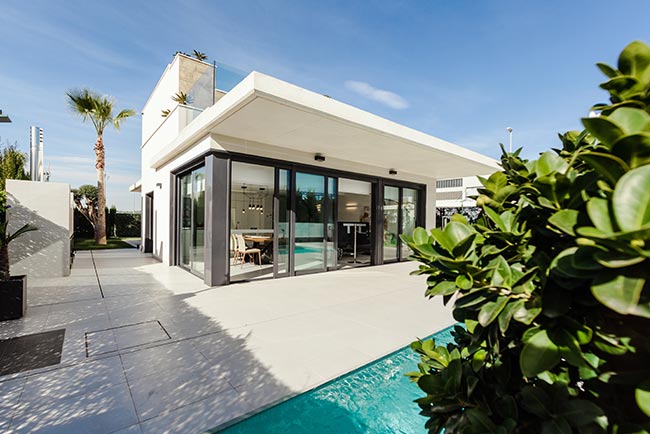| Enabler 1 |
European cross-border scheduling with international train path planning [TRL6/7] |
| Enabler 2 |
Improved capacity allocation using rolling planning and TTR [TRL6/7] |
| Enabler 3 |
Decision support for short term planning [TRL5/6] |
| Enabler 4 |
Train path and schedule optimisation methods and strategies for capacity efficiency, punctuality and energy saving for different parts of the network and different traffic situations (level of punctuality). [TRL5/6] |
| Enabler 5 |
Improved rail traffic simulation models for selected Use Cases to forecast punctuality in the network (e.g., simulating proportion primary and secondary delays, simulations drivers vs. ATO over ETCS). [TRL6/7] |
| Enabler 6 |
Integration of planning systems and TMS with a) yard capacity planning and b) station capacity planning [TRL5/6] |
| Enabler 7 |
New planning and operational processes using feedback loops from ERTMS ATO and C-DAS [TRL5/6] |
| Enabler 8 |
Real-time connection of rail networks as managed by TMSs and involved actors [TRL6/7] |
| Enabler 9 |
Modelling and decision support for cross-border traffic management [TRL5/6] |
| Enabler 10 |
Integration of TMS with a) yard management system and processes; b) station management system and processes; c) energy management (Electric Traction System); d) real-time crew / rolling stock dispatching [TRL6/7] |
| Enabler 11 |
HMI for TMS based on User Experience (UX) Design and user input [TRL8]; |
| Enabler 12 |
Real-time convergence between planning & feedback loop from operations [TRL4/5] and Technical Enabler 15; TMS speed regulation of trains, precise routes and target times for ATO and dynamic timetables [TRL4/5]. |
| Enabler 13 |
Cooperative planning multi-actors within rail [TRL4/5]; and |
| Enabler 14 |
Integration of incident management and customer information, with IM and RU interaction and Decision Support for Disruption management [TRL4/5]. Feedback-loop with traffic simulation (Technical Enabler 12) verifying the algorithms of Technical |
| Enabler 15 |
TMS speed regulation of trains, precise routes and target times for ATO and dynamic timetables |
| Enabler 16 |
Automation of very short-term train control decisions [TRL5] |
| Enabler 17 |
Real-time conflict detection & resolution for main line and optimisation [TRL4/5] All of the developments regarding both technical enablers have a TRL 4. |
| Enabler 18 |
Improved rail integration using B2B intermodal services. This covers aspects of cross-operator information, sharing on e.g. sales and distribution, traffic information, end-user experience. |
| Enabler 19 |
Harmonised interfaces between rail operators and other transport modes, leveraging existing European standards when applicable to enhance collaboration between mobility providers and support B2B integration including the objective to deliver an enhanced end-user experience. The TRL 5 developments within this WP will be based on the specifications and analysis done in WP19. Within this WP TRL5 will be reached in order to be used for the demonstrators. |
| Enabler 20 |
Focused on services and solutions that improves the quality of the travel and it is focused on the support to PRM and passengers with special needs |
| Enabler 21 |
Dedicated to the development of delivering hands free experience for travellers using rail services and transferring between rail operators, other mobility modes and developing a Wi-Fi Roaming setup, which will allow travellers using different rail operators to seamlessly stay online |
| Enabler 22 |
Focused on the development of smart solutions for better passenger flow and guidance that is based on real-time provided in different channels adapted to the different user’s capabilities in order to allow the data Exchange between smart phones and infrastructure that would improve guidance. The developments within this WP are based on the specifications and analysis done in WP19. This WP will reach TRL4 for Enabler 20 and 22 and TRL 5 for Enabler 21, results will be used for the demonstration in WP23. |
| Enabler 23 |
Short term demand forecast calculation using run time data (e.g. ticketing data, short term weather forecast, passenger density, ….) |
| Enabler 24 |
Long term demand forecast with focus on data analytics based on a variety of sources (e.g., public events, holiday calendar) and operators’ data (e.g., fare, passenger density data) and historical information for predictive models related to passenger clustering |
| Enabler 25 |
Integrated traffic simulation and demand forecast in a Digital Twin to optimise offer, passenger occupancy, connection time and other service-related elements |
| Enabler 26 |
Optimised rail capacity to better match the demand; Synergy between short term and long-term forecast (e.g. weather forecast for an airport line) combined with Digital Twins in order to provide optimisation guidance |
| Enabler 27 |
Disruption management across different mobility modes enabling operators to collaboratively solve the disruption and properly inform passengers The developments within this WP are based on the specifications and analysis done in WP19 and will reach TRL 4-5. All results developed are used for the demonstrations in WP25. The demonstrations take place in a set of hubs or labs (depending on the task or sub-task details) where the adequate equipment and infrastructure is made available. |












